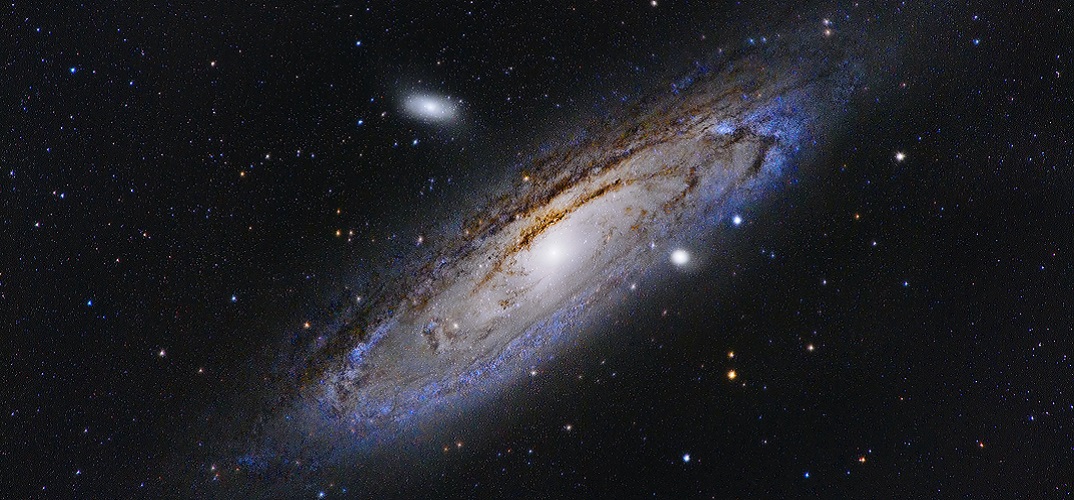Galactic archaeology uncovers the dramatic history of our next-door neighbour, the Andromeda galaxy

Research led by the University of Hertfordshire has revealed the dramatic history of Andromeda, our nearest neighbouring galaxy.
Using state-of-the-art modelling, Professor Chiaki Kobayashi and a team of international astrophysicists have determined details about the galaxy’s history through galactic archaeology – an approach that examines the chemical composition of stars and the development of their host galaxy, to reconstruct its past.
The study, published in The Astrophysical Journal Letters, examines the elemental abundances in Andromeda, in particular the presence of both planetary nebulae – gas and dust that are formed from the cast-off outer layers of dying low-mass stars – and red-giant branch stars.
The analysis reveals that Andromeda’s formation was more dramatic and forceful than that of our own Milky Way. After an initial intense burst of star formation that created the galaxy, a secondary layer of stars was produced between 2 billion and 4.5 billion years ago, most likely triggered by what scientists call a ‘wet merger’ – a merging of two, gas-rich galaxies that instigates a large amount of star formation.
Scientists have long thought it likely that Andromeda experienced a merger of two galaxies, based on the position and motion of individual stars in the galaxy. Professor Kobayashi’s research shines new light on the nature and impact of such a merger using the chemical composition of stars – and explains how stars and elements were formed throughout the history of Andromeda.
Professor Kobayashi, Professor of Astrophysics at the University of Hertfordshire’s Centre for Astrophysics Research, said:
“This is a fantastic example of how galactic archaeology can provide fresh new insights into the history of our universe. By analysing the chemical abundance in different ages of stars in Andromeda, we can bring to life its history and better understand its origins.
“Although in many ways Andromeda is similar to our own Milky Way – it’s a similarly-sized, spiral disc galaxy – our new research confirms that its history is far more intense and dramatic, with bursts of activity forming stars in abundance, and two distinct eras of star formation.”
Professor Kobayashi’s theoretical model predicts two distinct chemical compositions of stars in the two disc components of Andromeda – one has ten times more oxygen than iron, while another has a similar amount of oxygen and iron. This modelling has been confirmed by the spectroscopic observations of planetary nebulae, and also by those of red-giant stars with the James Webb Space Telescope (JWST).
The new study continues Professor Kobayashi’s ongoing, ground-breaking research into the origin of elements in the Universe. As she explains, “Oxygen is one of the so-called alpha-elements produced by massive stars. The others are neon, magnesium, silicon, sulphur, argon, and calcium.
“Oxygen and argon have been measured with planetary nebulae, but Andromeda is so far away that JWST is required to measure other elements, including iron. In coming years, JWST and ground-based large telescopes will keep looking at Andromeda – giving further weight to the new findings.”
The paper ‘On the alpha/Fe bimodality of the M31 disks’ is available now in The Astrophysical Journal Letters. View more information about our astrophysics research on the University of Hertfordshire’s website.